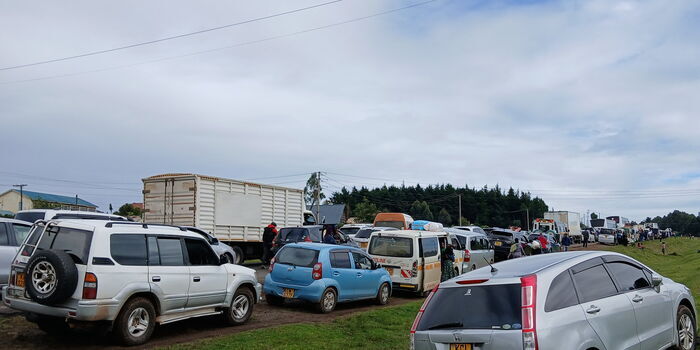Thousands of travellers were left stranded over the weekend as heavy traffic congestion paralysed the busy Nairobi–Nakuru Highway, one of the country’s most vital transport corridors. The snarl-up, stretching for kilometres, has inconvenienced long-distance bus companies, public service vehicles, and private motorists worsening frustrations as families prepare for school reopening.
The Long Distance Drivers and Conductors Association (LoDCA) attributed the gridlock to indiscipline among motorists, particularly overlapping and disregard for traffic rules, compounded by the limited number of traffic police deployed along the route. Heavy commercial trucks at weighbridges, especially around Gilgil, further slowed movement, creating ripple effects felt across the corridor.
On Sunday night, motorists reported being stuck for hours between Naivasha Prisons and the Keroche area. Many were forced to spend the night on the roadside as traffic flow ground to a halt. Persistent rains worsened the ordeal, making narrow, poorly maintained sections of the road treacherous to navigate.
Bus operators issued travel advisories, warning customers of delays in both departures and arrivals. Tahmeed Bus, for example, urged passengers to remain patient at designated pick-up points, acknowledging disruptions in passenger and parcel services on both upcountry and Mombasa routes.
Frustrated motorists expressed anger over what they termed government neglect of critical road infrastructure. “Stalled at Kijabe for three hours now. It took me 10 hours to drive from Gilgil to Nairobi yesterday. I am tired. President Ruto, please consider expanding this infrastructure,” one road user lamented.
The Motorists Association was equally critical, accusing traffic police of abdicating their responsibilities. “During the day, traffic police flood the roads – not to ease movement, but to harvest bribes. At night, when motorists most need order and safety, the same police vanish,” the group said.
The Nairobi–Nakuru highway is a lifeline for trade, travel, and regional connectivity, but chronic congestion continues to expose its outdated design and inadequate capacity. With schools reopening and pressure mounting from transporters and road users, authorities face growing calls to urgently fast-track expansion and dualling projects while implementing immediate traffic management interventions to prevent a repeat of the chaos.

